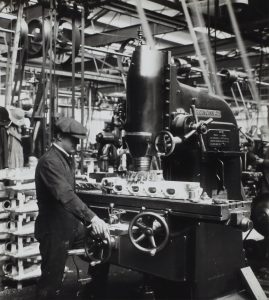Guide to Developing Efficient Machining Workflows for Metal Fabrication Shops
Efficient machining workflows are essential for maximizing productivity and profitability in the metal fabrication industry. This guide provides practical guidance and actionable steps for metal fabrication shop owners, managers, and engineers to optimize their machining processes. By focusing on strategies that directly impact the bottom line, this guide aims to reduce costs, minimize waste, improve cycle times, and increase production throughput. It will demonstrate applied engineering knowledge in manufacturing while maintaining an intelligent and accessible style, catering to small business owners in the industry.
Section 1: Understanding the Importance of Machining Workflows
Explain the significance of machining workflows in metal fabrication, emphasizing how streamlined processes can lead to reduced lead times, improved product quality, and increased overall efficiency. Provide examples of successful businesses that have benefited from efficient machining workflows.
Identifying Workflow Bottlenecks
Identify common areas where bottlenecks occur in machining workflows, such as tool changeovers, material handling, or programming delays. Provide solutions to overcome these challenges, such as implementing better tool management systems, optimizing material flow, or using CAM software to streamline programming.
Optimizing Tool Selection and Cutting Conditions
Explain the importance of selecting the right tools and cutting conditions for specific machining tasks. Discuss the criteria for choosing end mills, tool holders, and coatings based on workpiece material and machining requirements. Highlight the impact of cutting speed, feed rate, and depth of cut on cycle times and tool life.
Streamlining Setup and Changeover Processes
Detail techniques to reduce setup and changeover times, leading to increased machine utilization and productivity. Include best practices like pre-staging tools and materials, using quick-change tooling systems, and employing automated setup procedures.
Material Utilization and Waste Reduction
Discuss strategies for optimizing material utilization to minimize waste and lower material costs. Cover nesting optimization techniques, remnant usage, and adopting lean inventory management principles.
Implementing High-Speed Machining Techniques
Explore the benefits and considerations of high-speed machining for metal fabrication shops. Explain how high-speed machining can increase production throughput while maintaining precision and surface quality. Provide tips on machine selection and tooling requirements for successful implementation.
Leveraging Automation and Industry 4.0
Highlight the advantages of automation and Industry 4.0 technologies in machining workflows. Discuss the role of CNC automation, robotics, and data-driven manufacturing in improving efficiency, reducing human errors, and enabling predictive maintenance.
Summarize the key takeaways from the guide and emphasize the importance of continuously improving machining workflows to stay competitive in the metal fabrication industry. Encourage readers to apply the provided strategies and leverage their engineering knowledge to achieve optimal results in their machining operations.
Streamlining Machining Workflows for Metal Fabrication Shops Continued
Efficient machining workflows are the backbone of a successful metal fabrication shop. By analyzing and optimizing how work moves through the shop, business owners and managers can achieve significant gains in productivity, cost-savings, and quality. This guide focuses on actionable strategies that directly impact the bottom line, catering to metal fabrication shop owners and precision machining facilities.
Improving Material Flow and Handling:
A key aspect of optimizing workflows is ensuring smooth material flow and handling. By consolidating preparatory operations and positioning part staging areas close to processing equipment, you can minimize duplicate handling and transportation. Standardizing workflow directionality and eliminating excess motion in machine setups also contribute to efficient material flow.
Evaluating Work Scheduling:
Intelligent scheduling of work through the machining workflow is crucial for balancing flow and maximizing asset utilization. Regularly reviewing production plans and shop floor load helps adjust schedules to keep machines running at full capacity. Grouping same-setup jobs and optimizing job queues for time-efficient staging are additional strategies to enhance scheduling.
Streamlining Changeovers:
Reducing changeover times is essential for increasing productive machining time. Designing quick-change fixtures and tooling holders, staging preset tooling offline, and standardizing tooling and fixtures all contribute to faster changeovers. Employing 5S methodology ensures consistent and efficient machine setups.
Monitoring Cycle Times:
Understanding net cycle times for each operation is essential for optimization. Regular time studies across all operations, identifying constraints limiting throughput, and comparing similar jobs can lead to cycle time reductions. Setting reasonable target times based on historical data drives continuous improvement.
Sustaining Improvements:
Sustaining lean workflow management requires standardized practices. Documenting optimized methods, providing visual workflow displays, designating workflow owners, and encouraging worker feedback are crucial for maintaining efficiency gains.
By adopting these strategies and continuously evaluating and improving workflows, metal fabrication shops can achieve marked improvements in velocity, cost-savings, and quality output. Sustained efforts to eliminate waste and enhance productivity lead to increased profitability and competitiveness in the industry.
